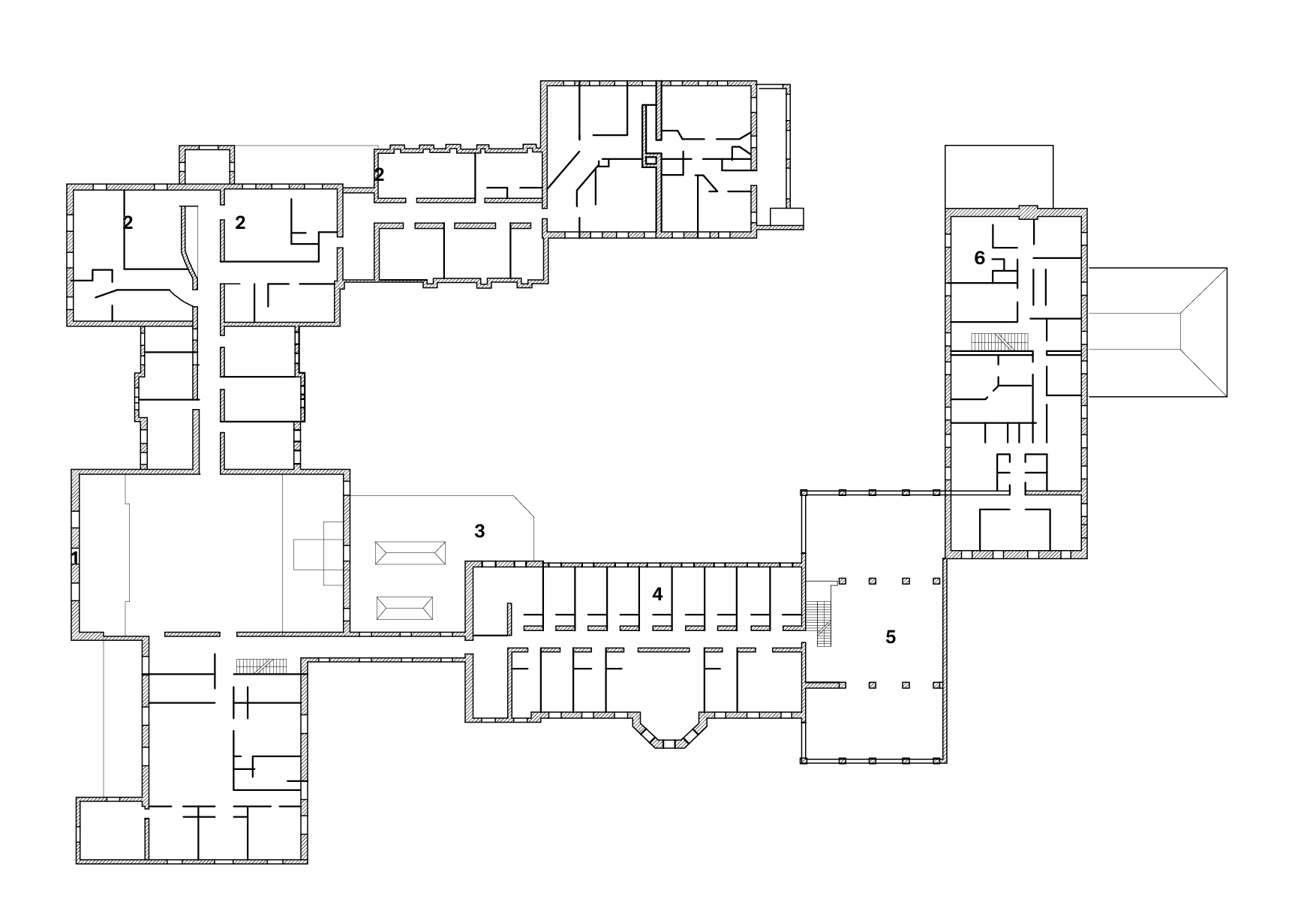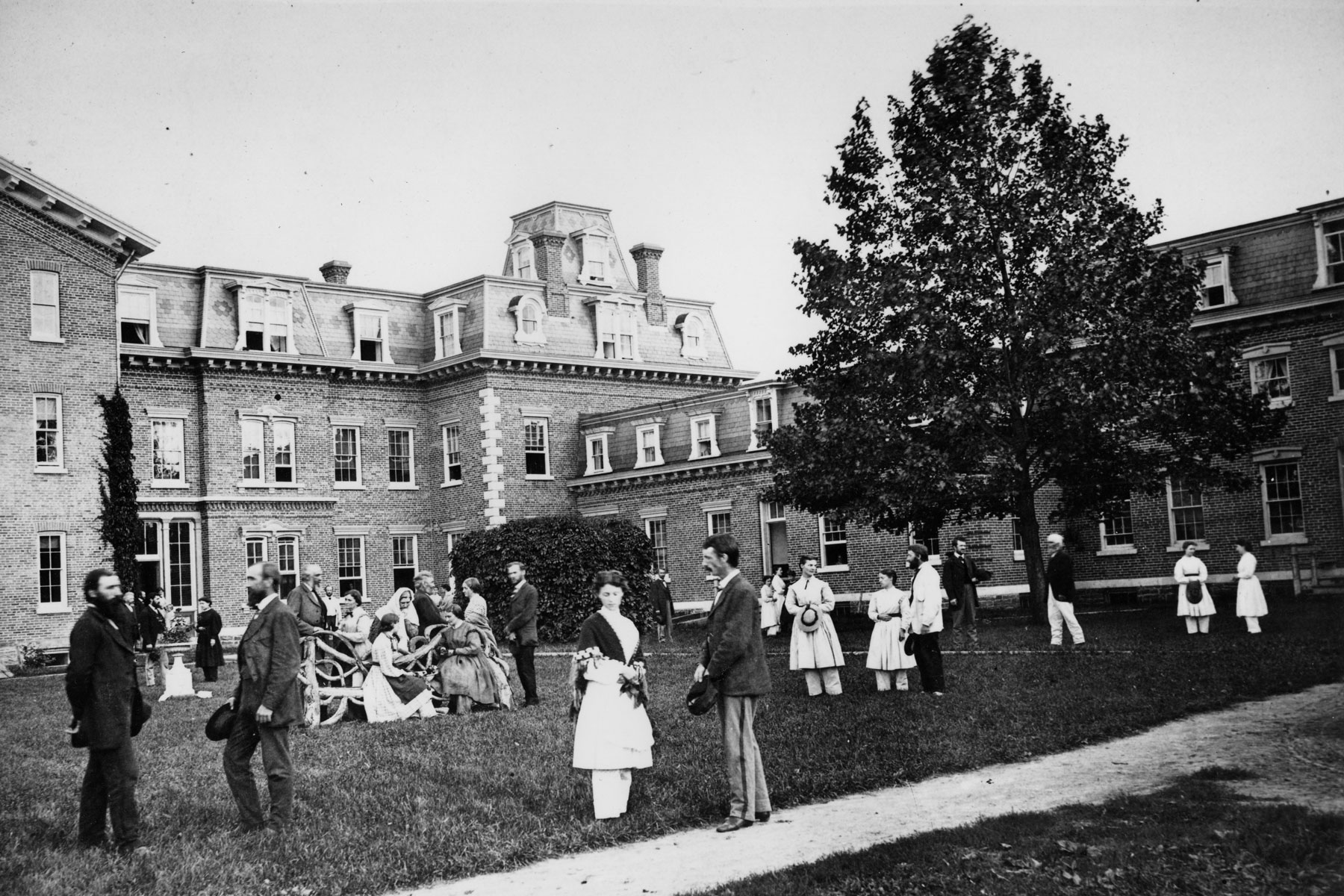Perfectionists
![]()
Oneida Community, New York, USA
Religious, Christian
Complex Marriage
Communal property, Joint Stock Company
1848 - 1880

Oneida Community, New York, USA
Religious, Christian
Complex Marriage
Communal property, Joint Stock Company
1848 - 1880
1 Assembly Hall 2 Lounge 3 Library 4 Singles’ Rooms 5 Dining Room 6 Children’s Rooms 7 Children’s House

The Perfectionists were scandalizing their neighbors with free love 100 years before the hippies. Inspired by Darwin, Huxley, and the bible, the Perfectionists practiced a radical form of communalism. They believed Jesus Christ had returned in the year 70 AD and they were already living in a perfect world. Women worked, were educated, had equal voting rights, cut their hair short, and wore pants. Work was assigned by ability and inclination, and regularly changed to prevent fatigue. The belief that there “is no marriage in heaven,” –which led other religious sects, such as the Shakers, to choose a life of celibacy–the Perfectionists chose to interpret through a practice of “complex marriage.”
The Community House at Oneida was built in 1860 to house its 300 members. The House, built in several phases, was organized to reflect the non-nuclear family structure and practice of Complex-Marriage. After 20 years of perfection Noyes fled to Canada in 1879 to avoid prosecution for the sinisterly vague charge of ‘statutory offense,’ the practice of Complex Marriage was ended and, like many of the utopian visions before and after, Oneida ended as a joint-stock company in 1881. Today you can still buy Oneida silverware and the communal house built for the commune still houses retired employees.


Ungers, Liselotte, and Oswald Mathias Ungers. Kommunen in Der Neuen Welt: 1740-1971. Köln: Kiepenheuer & Witsch, 1972. Page 65